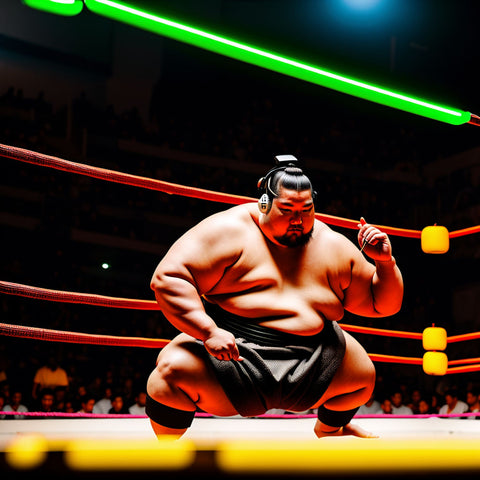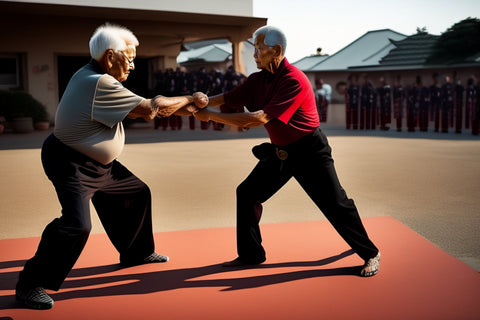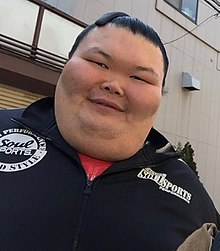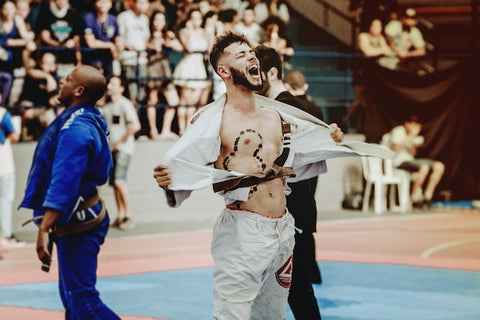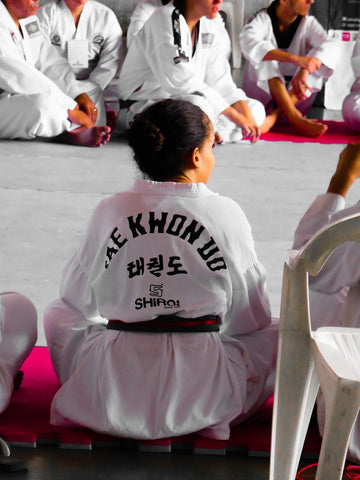Can Karate Be Self Taught (From A Black Belt)
Since I studied Kyokushin Karate, which is more street combat, I had to break a stack of roof tiles with a Karate chop and endure fighting 15-20 individuals continuously, before getting my black belt.
Those were on top of my Karate drills, Kata (display forms of Karate), and other strength, stamina, and technique tests.
So, can Karate be self-taught? Depending on how fast a learner you are, achieving each color belt takes a minimum of 50 to 150 hours of focused training. By the time you hit black belt first dan, you’re likely to have trained at least 600 to 1000 hours or about 3 to 4 years.
As many say, the training has only just begun once you become a black belt first dan.
You can certainly pick up Karate at home - just like any skill you can now learn online. However, you’ll need to be prepared to put in the hours to refine your moves, and also get a sparring or training partner to test and hone your combat (kumite) skills.

Let’s not forget that to be tested in the martial art, you typically need to have some form of formal membership in a Karate association. So, that’s another consideration you need to have – are you happy learning this martial art without going through the belt gradings?
Karate is a martial art that requires constant active application.
Karate comprises the moves (kata), the drills to develop fluency in the basic punches and kicks, as well as the stamina and strength building workouts. It also comprises sparring (kumite) – which puts to practice how you apply karate moves instinctively and strategically to defend yourself in combat.
Learning Karate fighting techniques – the devil is in the details
As a beginner, you can get a good introduction and teach yourself Karate through materials such as training videos online from YouTube.
But there will be limitations as to how much you can develop in self-defense skills if you do not attend classes. There could even be times when you’re confused with the different versions and styles of Karate moves demonstrated online.
Even if you think you’ve got the moves, you might not be executing some of them correctly and could incur unnecessary injury, or lack power in the moves.
For example, slightly angling your hand or foot in certain ways can lead to a more effective push when you’re trying to get a straight punch or kick out. But it’s difficult to teach yourself these nuances or have mistakes corrected without a knowledgeable someone beside you.
That’s why executing the correct techniques is best done with a mentor who can physically guide you when you’re slicing down a back-hand strike or throwing out a middle punch.
Keeping yourself motivated in Karate
Self-motivation is also critical in getting you sufficiently rehearsed with the moves. As a beginner, even if you’re not yet looking at the 10,000 hours to become a pro at the martial art, you’ll definitely need to keep the momentum of training going.
Typically, a Karate session can last for about 1.5 to 2 hours, and about twice a week. You’ll need to set aside that amount of time to practice in a regime that comprises drills, techniques, and moves.
Hence, working out at a Karate dojo has its advantages. Aside from turning up for class (which keeps you practicing), you join a community with a common interest in martial art.
Learning together with a group of strangers who eventually become friends and sparring partners can motivate you to strive harder. People at your belt level help you realize where you stand in terms of progress. You’re also better able to practice together in small groups – reminding one another on steps or techniques that have been overlooked.
That’s in addition to the mentoring you get when you’re officially coached by a senior member (senpai) or your teacher (sensei) in karate moves and techniques.
After all, gaining a color belt for each stage doesn’t have much meaning unless there is a competition to benchmark your standards against, constant learning, or a community to cheer you on amidst the tough training.
Commitment to Learn Karate
That said, it’s all right to give Karate a sampler session online before you take the leap to join physical classes.
This is especially so amidst a pandemic when we’re all keeping our social distance.
I personally think if you’ve never tried out martial arts before, it’s much more motivating to just pay for the class and find out what it’s like when you’re actually there.
That was what I did, and I am glad to have done so because when I walked past and saw the class in action, I was stunned and wondered what I had gotten myself into. It was fortunate that I had already locked in the payment – so I decided to proceed with attending the class and giving it a shot.
Having an encouraging teacher, seniors and classmates really helped me keep on going, and while I took time to build up my strength, techniques and stamina, I was never prouder of having achieved beyond my limits.
In case you’re not aware, some styles of Karate require you to do physical body breaking of a stack of ceramic roof tiles or if you’re keen – even baseball bats.
Nothing beats trying out a class at a dojo for a first-hand experience. You can always ask for a trial class. Challenge yourself today and take up Karate. Osu.
(“Osu” is the word we say to respond and acknowledge during Karate training)
Jeanie
Jeanie found her love for sports in Karate, and now holds a black belt first dan in the martial art. She has also previously studied other martial arts like Taekwondo and Muay Thai. Professionally, she is a communications specialist.
Other Posts By Author

